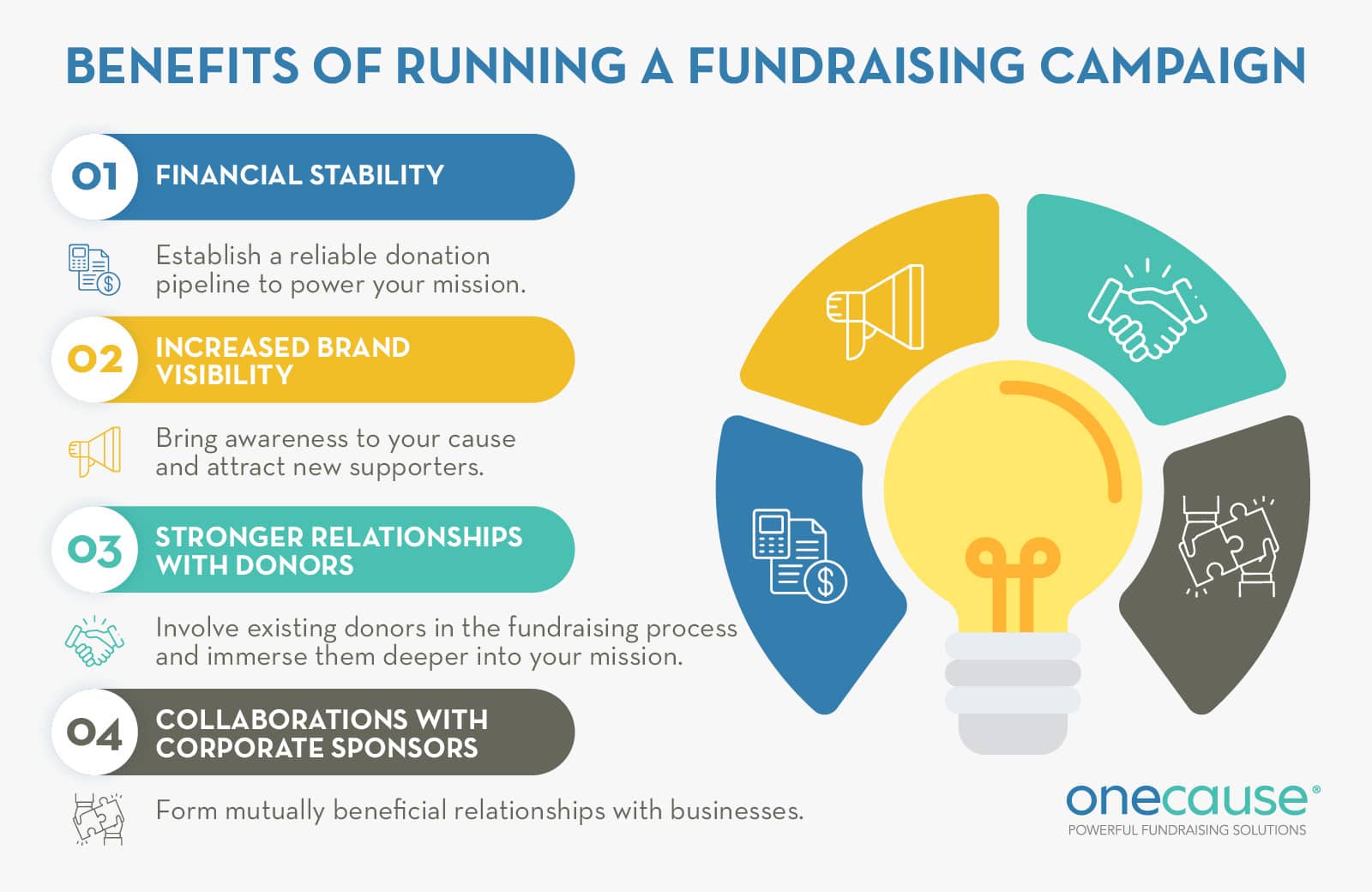Fundraising Consultant: Specialist Guidance to Boost Your Nonprofit's Fundraising
Fundraising Consultant: Specialist Guidance to Boost Your Nonprofit's Fundraising
Blog Article
The Role of Community Involvement in Nonprofit Fundraising: Building Lasting Relationships for Sustainable Assistance
Area involvement is progressively recognized as a vital component of effective nonprofit fundraising. By fostering genuine relationships with local stakeholders, organizations can cultivate trust and loyalty, which are important for lasting assistance. Nonetheless, the strategies and methods employed to involve neighborhoods differ extensively, elevating important inquiries regarding efficiency and impact. What are the very best techniques for cultivating these essential links, and how can nonprofits determine their success in this arena? Understanding these characteristics might substantially influence the future of fundraising initiatives and the total goal of nonprofit organizations.
Recognizing Area Involvement
Neighborhood interaction is an important element of effective not-for-profit fundraising efforts. Nonprofits should recognize vital stakeholders-- such as area members, regional organizations, and other organizations-- to create effective engagement techniques.
Reliable area interaction is asserted on energetic listening and responsiveness to the requirements and interests of the community. This process involves getting responses, understanding community dynamics, and making certain that the organization's mission lines up with neighborhood top priorities. Engaging the community can take different kinds, consisting of public conferences, volunteer opportunities, and collaboration efforts, each created to motivate involvement and investment in the company's objectives.
Additionally, area involvement need to be approached as an ongoing dialogue instead than an one-time initiative. By fostering a comprehensive environment where area voices are heard and valued, nonprofits can construct a strong foundation for future fundraising ventures. Eventually, a deep understanding of community engagement empowers companies to create genuine links that improve their overall efficiency and sustainability.
Advantages of Strong Relationships
Strong connections formed with area involvement yield countless advantages for not-for-profit fundraising efforts. Primarily, these relationships foster trust and integrity, important components in motivating benefactors to add. When potential supporters see a nonprofit proactively associated with their community, they are most likely to think in its goal and impact.

Moreover, these connections facilitate reliable communication. Nonprofits can take advantage of their connections to share tales of impact, updates, and needs, ensuring that advocates continue to be informed and involved. This open line of communication not only strengthens bonds yet additionally motivates referral promotion, increasing the nonprofit's reach.
Last but not least, solid area ties can attract new partners and sponsors. Businesses and people are much more inclined to straighten with organizations that demonstrate meaningful area participation, offering extra sources and assistance that can dramatically improve fundraising capabilities. Hence, cultivating durable relationships with neighborhood engagement is indispensable to a nonprofit's long-lasting fundraising success.
Methods for Reliable Involvement
Just how can nonprofits efficiently involve their communities to enhance fundraising initiatives? Developing targeted approaches is essential for promoting meaningful links. First, leveraging social media sites platforms makes it possible for companies to share their goal dynamically and interactively, getting to a broader target market. Regular updates, engaging material, and calls-to-action can galvanize area passion and engagement.
2nd, organizing area events, such as workshops, volunteer possibilities, or fundraising drives, facilitates face-to-face interaction, permitting nonprofits to display their effect and initiatives. These events not just raise funds yet likewise grow relationships and allow neighborhood participants to engage directly with the reason.
Third, implementing personalized interaction strategies can improve engagement. Tailoring messages to certain donor sections based upon rate of interests and past contributions promotes a sense of belonging and investment in the company's goal.
Lastly, developing collaborations with local organizations and neighborhood leaders can amplify outreach initiatives. Collective campaigns can boost visibility and integrity, showing a collective dedication to the community's health. By integrating these techniques, nonprofits can construct long-term partnerships that improve fundraising initiatives and drive lasting assistance.
Determining Engagement Success
While involving the community is essential for successful not-for-profit fundraising, determining the efficiency of these engagement efforts is similarly essential. Developing clear metrics allows companies to examine just how well they are linking with their audience and attaining their fundraising objectives. Trick efficiency indications (KPIs) such as donor retention prices, volunteer engagement degrees, and interaction on social networks systems offer concrete information for assessment.

Regularly analyzing these metrics enables organizations to pivot their methods when required, making sure that community involvement stays aligned with their general mission. Additionally, sharing these outcomes with stakeholders fosters openness and builds depend on, encouraging more community participation. Inevitably, a robust dimension about his structure not just notifies future fundraising efforts but additionally strengthens the connection in between the not-for-profit and its supporters, laying the groundwork for sustainable success.
Situation Researches in Neighborhood Impact
Numerous study highlight the profound effect that community engagement can carry not-for-profit fundraising success. One notable example is the "Food for Thought" initiative, where a neighborhood food financial institution partnered with companies and institutions to host community suppers. These events not just raised funds but also cultivated a sense of belonging among individuals, considerably increasing contributor retention rates.
An additional compelling situation is the "Environment-friendly Spaces Task," which entailed local residents in the revitalization of city parks. This initiative not only garnered financial backing from neighborhood companies however also cultivated a volunteer base that contributed to recurring maintenance and shows. The sense of ownership and satisfaction amongst neighborhood members converted into sustained contributions.
In the realm of arts, the "Art for All" project successfully involved neighborhood musicians and patrons to develop collaborative art setups, bring about increased exposure and contributions for a local arts not-for-profit.
These instances highlight that when nonprofits prioritize community participation, they can develop enduring partnerships that boost fundraising initiatives, guaranteeing sustainable support and fostering a vivid neighborhood culture. Such instances show that neighborhood engagement is not merely a technique but a vital column of not-for-profit success.
Final Thought
To conclude, community interaction is essential to the success of nonprofit fundraising initiatives. By cultivating strong partnerships with local stakeholders, companies boost trust fund and credibility, resulting in enhanced donor retention and commitment. Executing reliable engagement approaches and determining their influence ensures that nonprofits can flourish and adapt. Inevitably, a durable foundation of area assistance not just enhances fundraising possible yet likewise grows a culture of partnership, necessary for attaining long-term business goals and sustaining purposeful impact.
Nonprofits should determine essential stakeholders-- such as neighborhood participants, regional visit homepage organizations, and various other organizations-- to create effective engagement strategies.

In final thought, neighborhood engagement is indispensable to the success of nonprofit fundraising initiatives.
Report this page